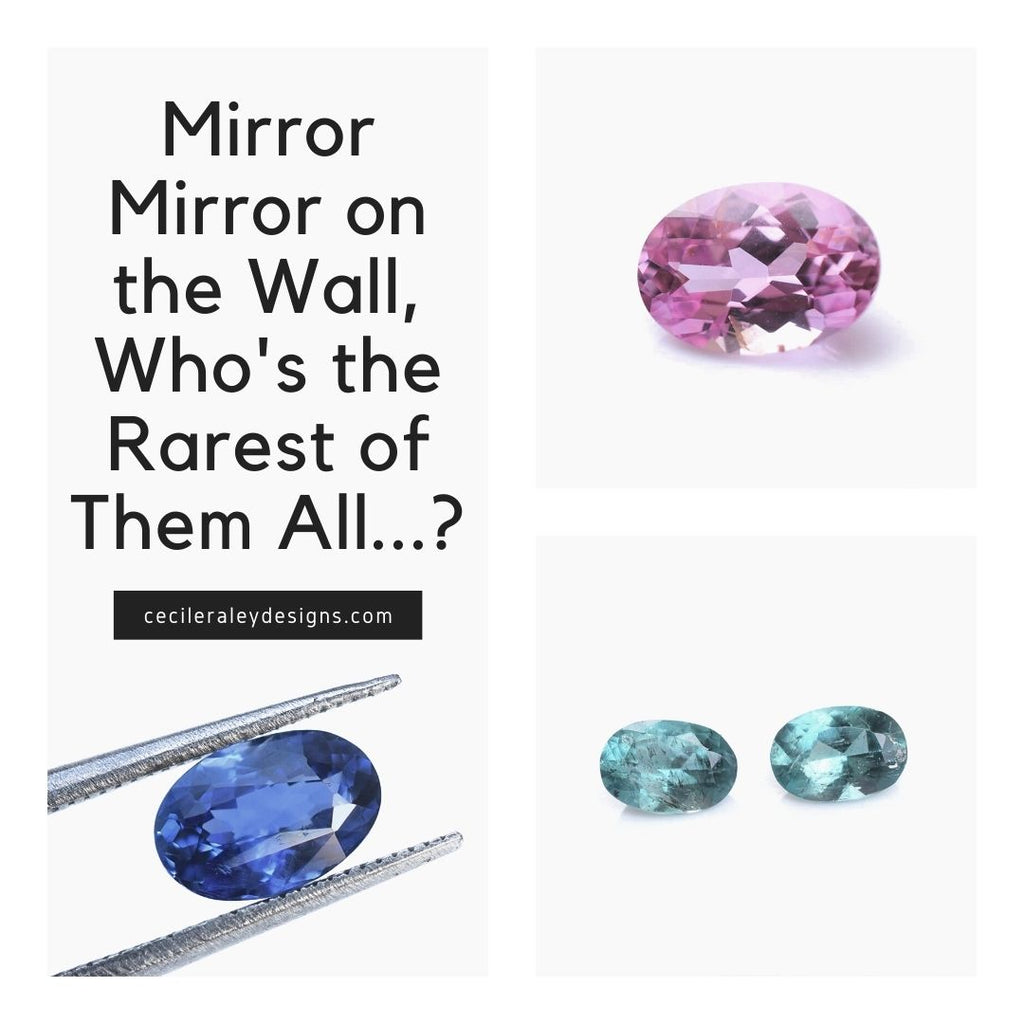Mirror Mirror on the Wall, Who is the Rarest of Them All?

Last week I received a request to make a rare gemstone pendant for a birthday girl. The buyer provided me with a list of gems she had in mind, such as grandidierite and taaffeite. Interestingly, though, tanzanite was also on her list of rare gems. "That's not a rare gem," I replied to her.
Well, much to my surprise, it turns out that tanzanite is on just about every rare gemstone list, such as this one, published by the International Gem Society:
What is the argument for including tanzanite? It is a single origin gem (yes, from Tanzania). Given that I can buy tanzanite anywhere easily, this argument wasn't even on my radar. Also, I disagree. The tanzanite mines are producing gems in large quantities which makes it very easily available. Also, compare the price of a 3 carat tanzanite to that of a 3-carat sapphire of similar color and clarity: deep but vibrant blue with hues of purple. You’ll find that tanzanite is also cheaper, making it more likely that it is not as rare.
Of course, if one considers just unheated vibrant pink or amethyst color purple tanzanite, then that’s very rare. Much more rare than blue sapphire even in top quality. And in 3+ carat sizes, you won’t find it hardly at all.
But this means that single origin is not the most important characteristic of what makes a gem rare. Rather, it is this: low production, or no production.
The gemstone hauyne, for instance is a single origin gem from the Eifel in Germany and there’s very little production. That said, however, we need to add another qualifier. There are many reasons why production of a gem can be low. For example, from what I was told, there had been an accident at the hauyne mining site a few years ago and since then the owners of the area, who are actually producing pumice to make bricks, are not letting gem collectors onto the property to look for hauyne. If they start looking, how much will they find? In this particular case it probably will not be much as hauyne was never found in large quantities before. Nevertheless, inaccessibility to gems is a factor apart from low or no production.
Production can in any case be low because it is too costly, as is the case with Utah’s red beryl. There is some material but the cost of getting it out of the ground would make the material astronomically expensive, so the owners of the mine have essentially stopped working it.
On the other hand, demand for hauyne or for red beryl is not high either. And this brings us to a more commercial understanding of what can make a gem rare: Insufficient supply to meet demand. There might be, for instance, more padparadscha sapphire available than afghanite or jeremejevite, or taaffeite, yet only padparadscha sapphire is well known to the general public. And since it’s been in the news as the gemstone of choice for some European royalty, demand (and prices) have gone through the roof.
A similar example is that of paraiba tourmaline from Paraiba, Brazil. Production has essentially come to a standstill, and because the gems have a beautiful color, there is more demand than supply and prices have increased dramatically as a result.


But, you may object, Paraiba, the location, may be mined out, but tourmaline the gemstone is available in abundance. So tourmaline itself is not a rare gem. It’s only rare when it contains the trace element of copper which creates its vibrant color. And copper is not itself part of what makes a gemstone a tourmaline (it’s not part of the chemical formula used to define tourmaline, in other words).
That said, when you go back to the lists of rare gems, you will find that there are actually many non-rare gemstones included, if by that we mean just the chemical composition that makes a stone a spinel, tourmaline etc.
One example is cobalt-bearing neon blue spinel which can be found only in Luc Yen, Vietnam, accessible right now only with a long quarantine upon arrival. Export from Vietnam occurs mainly by vendors themselves bringing the gems across the border, and since COVID-19 this method has more or less collapsed. (Just an FYI, Sri Lankan cobalt bearing spinel contains less cobalt and is consequently not as bright).
A more familiar example is blue sapphire, which actually exists in abundance. It is much less rare than for instance green sapphire. However when you narrow that down to the top quality royal blue sapphire and you want it to be unheated, then it is extremely rare. The same is true of Russian alexandrite, Kashmir sapphire, top quality unheated Burma ruby, and even Moroccan amethyst which can cost up to 30x as much as Brazilian amethyst.
So what are we to make of all this? Well, there’s never one single reason why a gem might or might not be rare. Some extremely rare gems such as grandidierite are not nearly as expensive as others because there’s no demand for them. Same with taaffeite, which on top of that, isn’t a very interesting looking stone: white, colorless, slightly brownish or pinkish, and included. This means that even an extremely rare gem might not have much commercial value or be very expensive, whereas an expensive gem need not be that rare, such as a white diamond.








